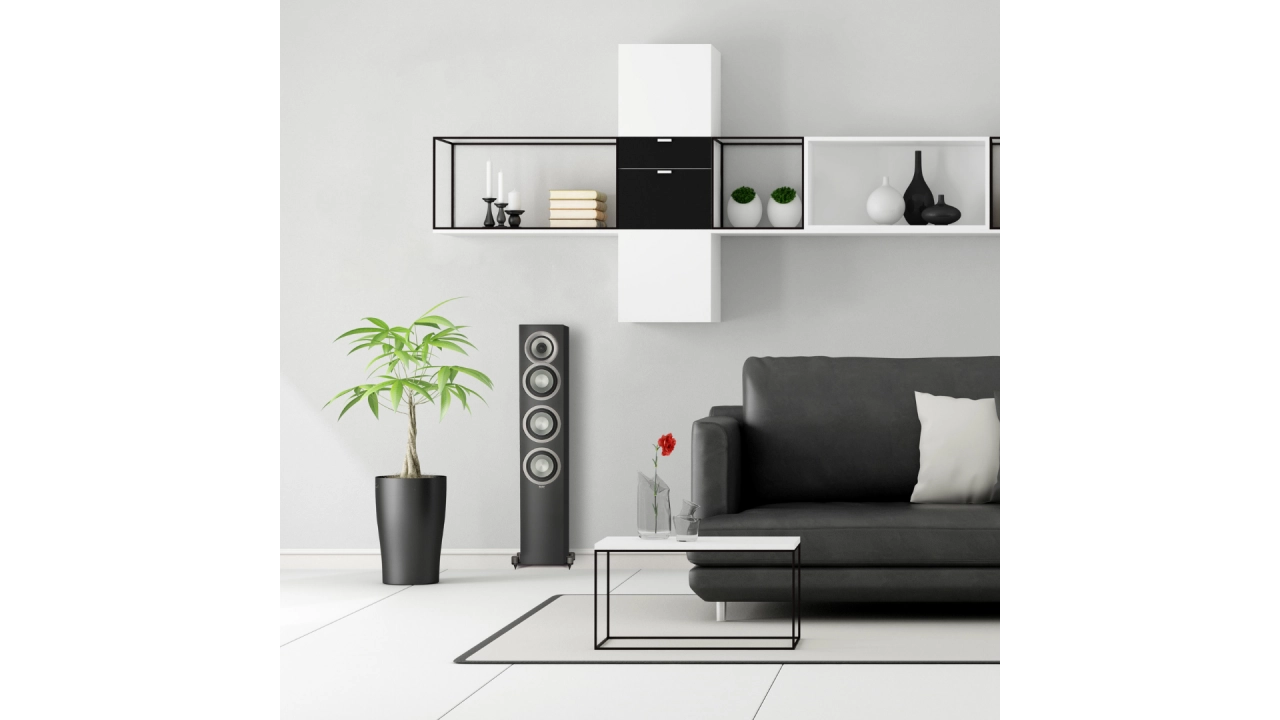How Do Floorstanding Speakers Work?
Floorstanding speakers should be your choice if you want excellent sound quality for your home theater system. But, how do floorstanding speakers work? Due to their size, these speakers offer a much better bass response than other options, such as stand-mount or bookshelf speakers. With a larger cabinet, these speakers give you a more significant sens of scale to improve your audio-visual experience.
What Are Floorstanding Speakers?
Floorstanding speakers are also known as tower speakers. They’re a staple for any home theater or stereo system setup. As you can tell by their name, these speakers don’t require additional stands or shelving, since they can be placed anywhere on the floor (as long as there’s enough space).
Tower speakers are larger than other speakers, often as tall as a reasonably large TV. You don’t need a stand or other equipment since they’re designed to stand upright. They can be placed beside your TV, home theater and other sound equipment.
They usually operate in pairs to create an immersive effect and fill the room with sound when positioned correctly inside any enclosed space. For example, if you’re watching a concert video, floorstanding speakers make you feel at the front of the stage.
How Do Floorstanding Speakers Work?
To produce the desired theater-like effect, tower speakers need to be as tall as the people occupying a room while they’re seated. They’re typically three to four feet tall, but some models are taller. The shorter units still provide you with the same effects and audio quality. These speakers offer several advantages:
Setup Options
Floorstanding speakers can be used as a standalone system and can also be connected to a set of other speakers to produce better surround sound. Either way, you need to connect your tower speakers to a receiver.
Vertical Design
The larger cabinet of these speakers means they will occupy more space. However, many of these systems take on a vertical design, which can help you save space with little planning.
Additional Drivers Can Focus on Specific Frequencies
Floorstanding speakers are designed to improve the sound quality of movies, musical performances and the viewing experience when you watch TV. Their cabinets usually hold several speaker drivers, which handle a variety of audio frequencies. Because of this feature, tower speakers can deliver more accurate audio output since each driver can handle a dedicated range of frequencies. This means you can have one driver focusing only on Bass Frequencies, one driver focusing on Lower Mids, and one drive focused on Upper Mids, with your tweeter handling the Highs.
Keep in mind that more drivers do not always mean a better speaker. The more drivers you have, the more things that can go wrong. Pulling off a great multi-driver design takes an experienced speaker designer (like those employed by ELAC).
Better Efficiency
Due to their size, these speakers produce better bass sounds with deeper tones. In addition, given their size, they offer better audio efficiency.
Audio efficiency is measured using decibels (dB) per one watt of power. The higher the dB, the less power is required to drive a speaker system. This aspect is where floorstanding speakers dominate. They typically require less wattage to produce more sound pressure levels, which means they’re more efficient than other speaker types.
So, for instance, the Debut 2.0 DF52 Floorstanding Speaker has a sensitivity of 86db @2.83v/1m. This value is generally much better than your standard bookshelf speaker. Since you have a massive speaker cabinet that amplifies your sound and produces a strong low-end, you need less power from your amplifier to produce all those frequencies at the same volume as a bookshelf speaker.
Soundstage Effect
You get a three-dimensional soundstage effect when floorstanding speakers are well-placed in your home theater. As a result, instruments tend to sound bigger as if you’re at a live performance. This effect is often described as a wall of sound, which can improve the movie theater experience for the entire family.
The placement of tower speakers plays a crucial role when you set up your speaker system. Some homeowners just let these speakers flank their projector screen or TV. However, there’s plenty of room to experiment. You can try placing them in different areas of your home theater and see where they work best in relation to your other speakers.
One BIG tip: Floorstanding speakers don’t sound best when you place them right against the wall. Walls tend to muffle the sound, so you don’t get the best output. It’s best to place them at least 12 to 18 inches away from a wall to get outstanding sound quality.
Pros and Cons Floorstanding Speakers
After answering “how do floorstanding speakers work,” you want to know their advantages and disadvantages to find out the best setup for your home theater.
PROS
- They work well with bookshelf and stand mount speakers
- Expect better dynamics since they can carry sounds in various frequencies
- They have a higher efficiency, which means they’re easier to drive
- They don’t require any additional installation work
- Due to their larger size, they can give you a better and fuller range of sounds
CONS:
- With a larger footprint, floorstanding speakers require extra floor planning
- You need to place them away from the wall, which means they will occupy more space.
Floorstanding speakers dramatically elevate your home theater experience. Once they get them, people rarely turn back to smaller models. Check out our catalog of top-of-the-line floorstanding speakers to get that larger-than-life room-filling sound.

